Understanding and Overcoming the Consequences of Burnout
Burnout is a pervasive occupational phenomenon characterized by emotional, physical, and mental exhaustion resulting from prolonged stress. Recognized by the World Health Organization as a syndrome, it manifests through symptoms such as chronic fatigue, cynicism, and decreased efficacy. Overcoming burnout requires a comprehensive approach that begins with recognition and culminates in sustained lifestyle changes and emotional healing. This article explores the stages of recovery, effective strategies, and practical steps to restore energy, motivation, and well-being.
Defining Burnout and Its Impact
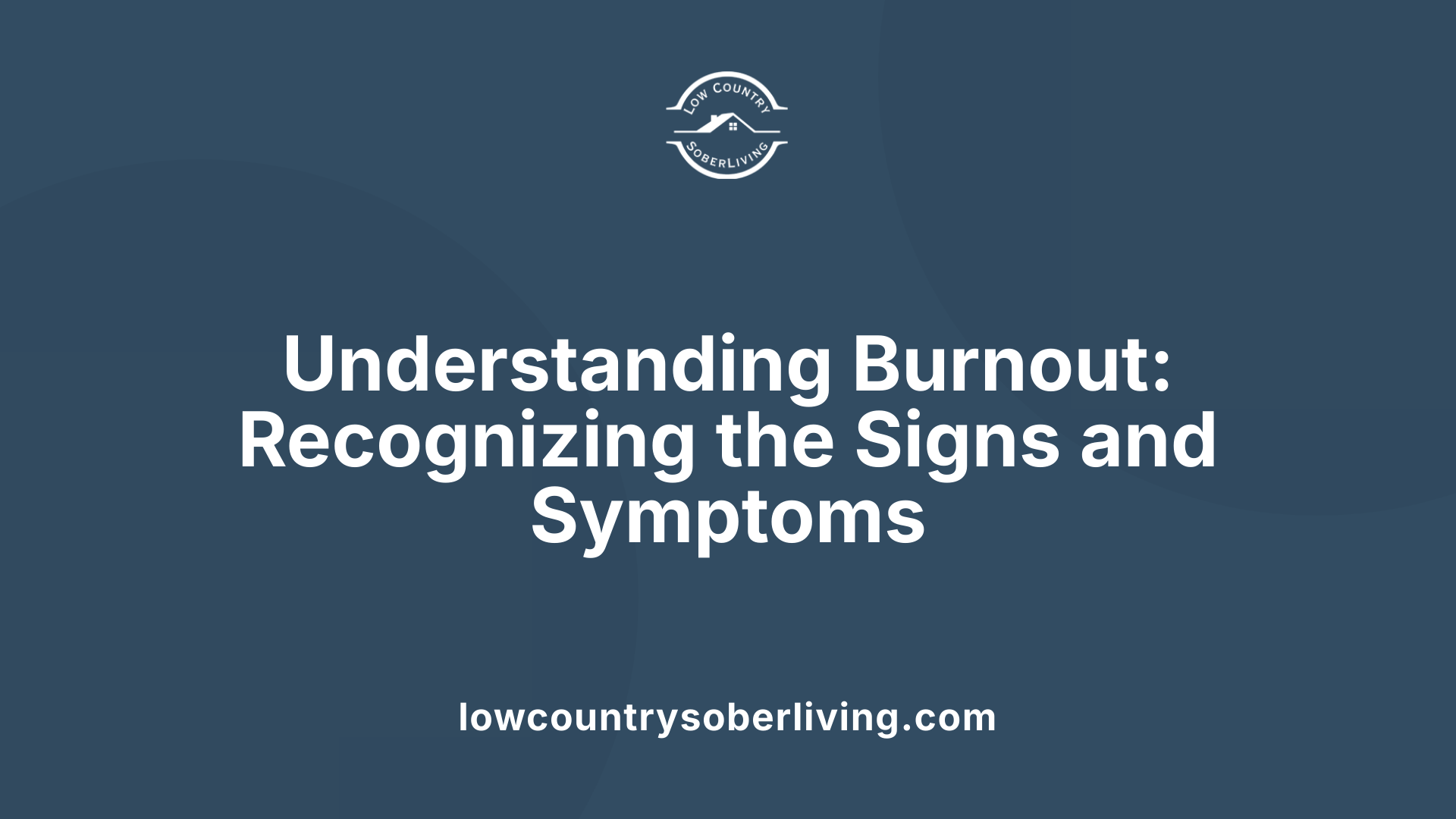
What is burnout?
Burnout is a state of emotional, physical, and mental exhaustion caused by prolonged or intense stress. It often stems from demanding work environments or responsibilities that seem overwhelming. The World Health Organization (WHO) classifies burnout as an 'occupational phenomenon' rather than a medical condition. It manifests through feelings of being drained, decreased professional efficacy, and growing cynicism or negativity towards one’s work.
This syndrome can affect anyone experiencing persistent stress, leading to a decline in overall well-being. While it is most common in high-pressure careers, burnout can also develop from caregiving, academic pressures, or personal life stressors.
Symptoms and signs of burnout
Recognizing burnout early is vital for effective management. Common signs include constant fatigue, irritability, and a sense of cynicism or detachment from work. Individuals often experience a marked decrease in motivation and satisfaction in their activities. They might also notice physical complaints such as headaches, muscle pain, gastrointestinal issues, or sleep disturbances.
Emotional signs encompass feelings of hopelessness, self-doubt, and emotional exhaustion. It is not unusual for someone experiencing burnout to feel overwhelmed and helpless, questioning their abilities and losing interest in activities they once enjoyed.
Physical, emotional, and behavioral manifestations
Burnout affects various aspects of a person’s health and behavior:
| Aspect | Manifestations | Details |
|---|---|---|
| Physical | Headaches, tiredness, gastrointestinal issues, muscle pain, sleep problems | Prolonged fatigue and physical discomfort are common. Lowered immunity can lead to frequent illnesses. |
| Emotional | Feelings of helplessness, detachment, depression, irritability | Emotional exhaustion often results in feelings of cynicism and a loss of emotional connection to work and others. |
| Behavioral | Reduced productivity, withdrawal from social activities, substance reliance | Burned-out individuals might procrastinate, avoid colleagues, and sometimes turn to substances like alcohol or drugs to cope. |
Understanding these signs can help individuals and organizations support early intervention, preventing burnout from worsening and impacting mental and physical health.
Stages and Development of Burnout
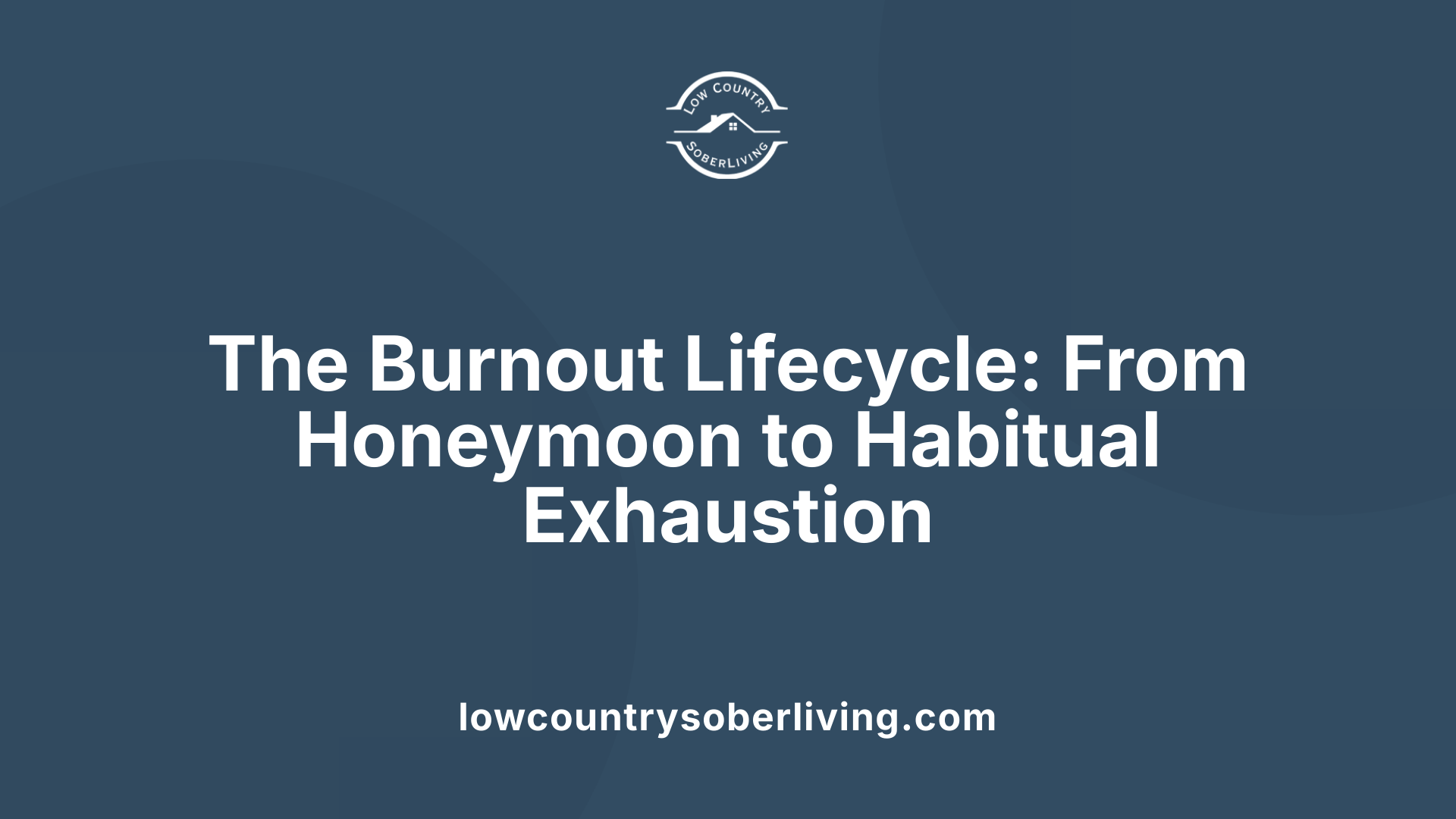
What are the stages of burnout?
Burnout is a process that unfolds gradually over time. It begins with what is often called the honeymoon phase, where individuals feel highly committed and energized about their work or responsibilities. During this initial stage, motivation and enthusiasm are high, and tasks may seem manageable.
As time progresses, signs of stress start to appear. Individuals may notice increased irritability, fatigue, or difficulty concentrating. This is the onset of stress, where the early warning signals of burnout become evident.
If stress continues without adequate management, it can move into a phase of chronic stress. People often experience cynicism, emotional withdrawal from work, and a sense of detachment. Feelings of helplessness and a loss of motivation become more prominent, and these symptoms mark the stage where burnout begins to fully develop.
The next stage is full-blown burnout. Here, individuals often feel physically and emotionally exhausted, hopeless, and overwhelmed. They might feel ineffective and question their competence, with symptoms impacting daily functioning.
In some cases, burnout can persist and evolve into what is known as habitual burnout. This stage involves ongoing sadness, fatigue, and emotional drain, making recovery more challenging and requiring sustained effort to restore well-being.
Understanding these stages emphasizes the importance of early recognition and intervention to prevent progression to more severe levels of burnout, ultimately aiding in effective recovery.
Understanding Causes and Risk Factors
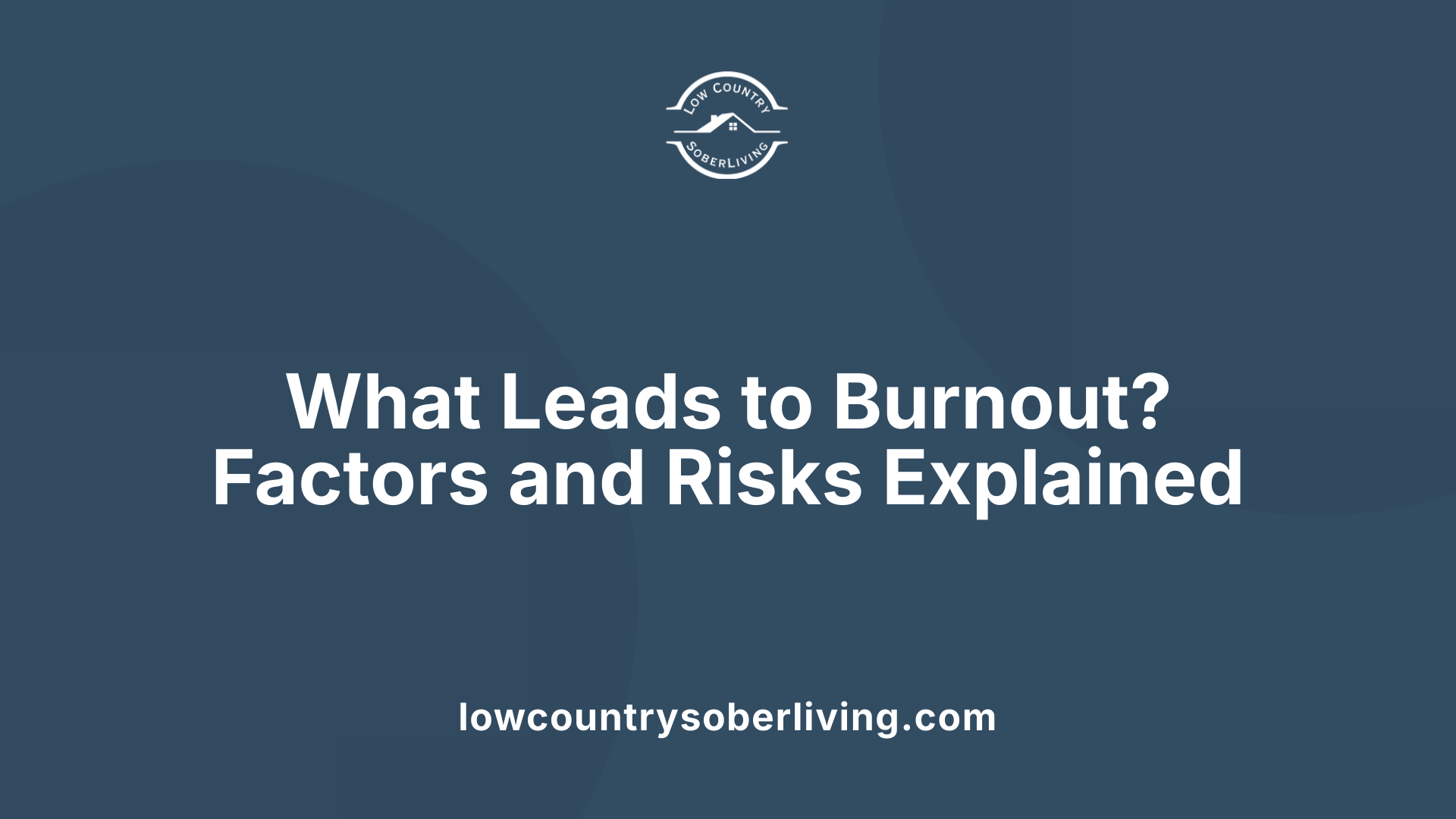
What causes burnout?
Burnout develops due to a mixture of work environment factors, lifestyle contributors, and personal characteristics. In the workplace, factors such as limited control over tasks, lack of recognition, high demands, and chaotic or unsupportive environments create significant stress.
Lifestyle choices also play a role. Overworking oneself, not getting enough sleep, and having little social or emotional support can heighten the risk of burnout. Additionally, neglecting self-care or engaging in unhealthy habits exacerbates feelings of exhaustion.
Personal traits and personality styles influence susceptibility. Individuals with tendencies toward perfectionism, high achievement, or pessimism often push themselves harder, which can lead to emotional and physical depletion.
Understanding these factors can help in recognizing potential risks early and adopting strategies to prevent or address burnout effectively.
Recognizing Burnout and Its Medical Differentiation
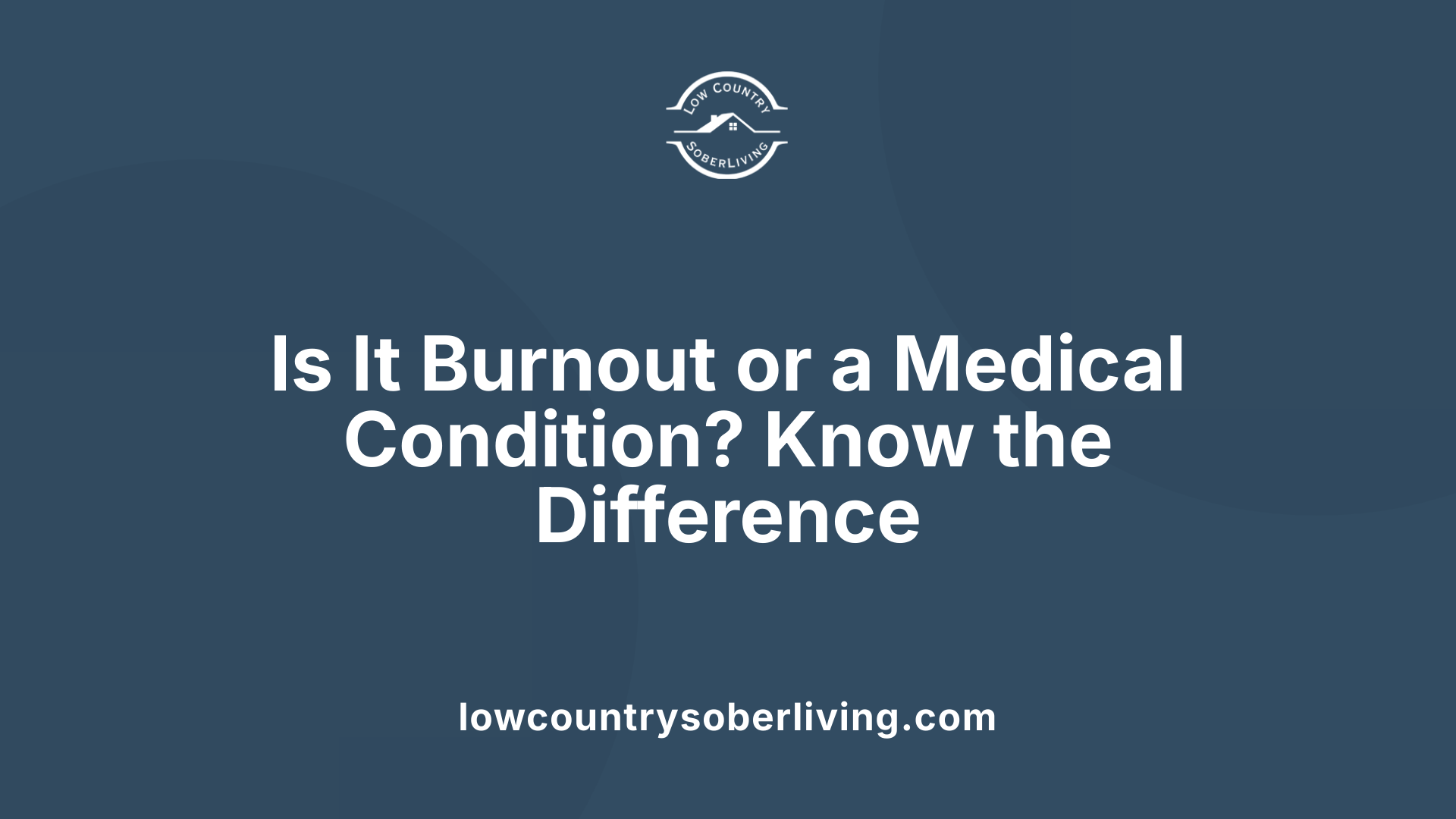
How can I recognize that I am burnt out?
Burnout manifests through various emotional, physical, and behavioral signs. Common indicators include feeling tired or drained most of the time, experiencing irritability, cynicism about work, and losing enthusiasm for daily tasks. You may also notice physical symptoms like headaches, muscle pain, or gastrointestinal issues. Emotional symptoms often involve feelings of helplessness, detachment from work or loved ones, and a sense of inefficacy or self-doubt.
It is important to assess whether these signs are linked to ongoing stressors. If you can identify specific sources of stress and notice that your feelings of exhaustion and cynicism are persistent, and physical symptoms are present, burnout could be the underlying issue. Furthermore, ruling out medical conditions such as thyroid problems or iron deficiencies is essential, as these can mimic burnout symptoms.
When should I consult a healthcare professional?
If you experience prolonged physical symptoms like headaches, fatigue, sleep disturbances, or gastrointestinal complaints, consulting a healthcare provider is advisable. Medical conditions like thyroid issues or iron deficiency anemia can cause similar symptoms and require appropriate treatment.
Seeking professional advice is also recommended if your emotional state worsens, if you develop feelings of hopelessness, or if physical symptoms do not improve despite lifestyle adjustments. A healthcare provider can conduct blood tests and assessments to rule out medical causes and offer guidance on management strategies.
Differentiating burnout from medical conditions like thyroid issues
While burnout involves emotional exhaustion, cynicism, and reduced performance stemming from prolonged stress, medical conditions such as thyroid disorders or nutritional deficiencies also cause fatigue, mood changes, and physical discomfort.
Thyroid problems, for example, often lead to changes in weight, temperature sensitivity, and hormone levels, with symptoms that may include hair loss and irregular heartbeats.
Iron deficiency can cause anemia, which presents as fatigue, weakness, and cognitive difficulties.
It is crucial to consult a healthcare professional for proper diagnosis. Blood tests for thyroid function and nutrient levels can pinpoint medical conditions. Differentiating between burnout and medical issues ensures appropriate treatment, whether it involves lifestyle modifications or medical interventions.
Six Key Steps for Burnout Recovery
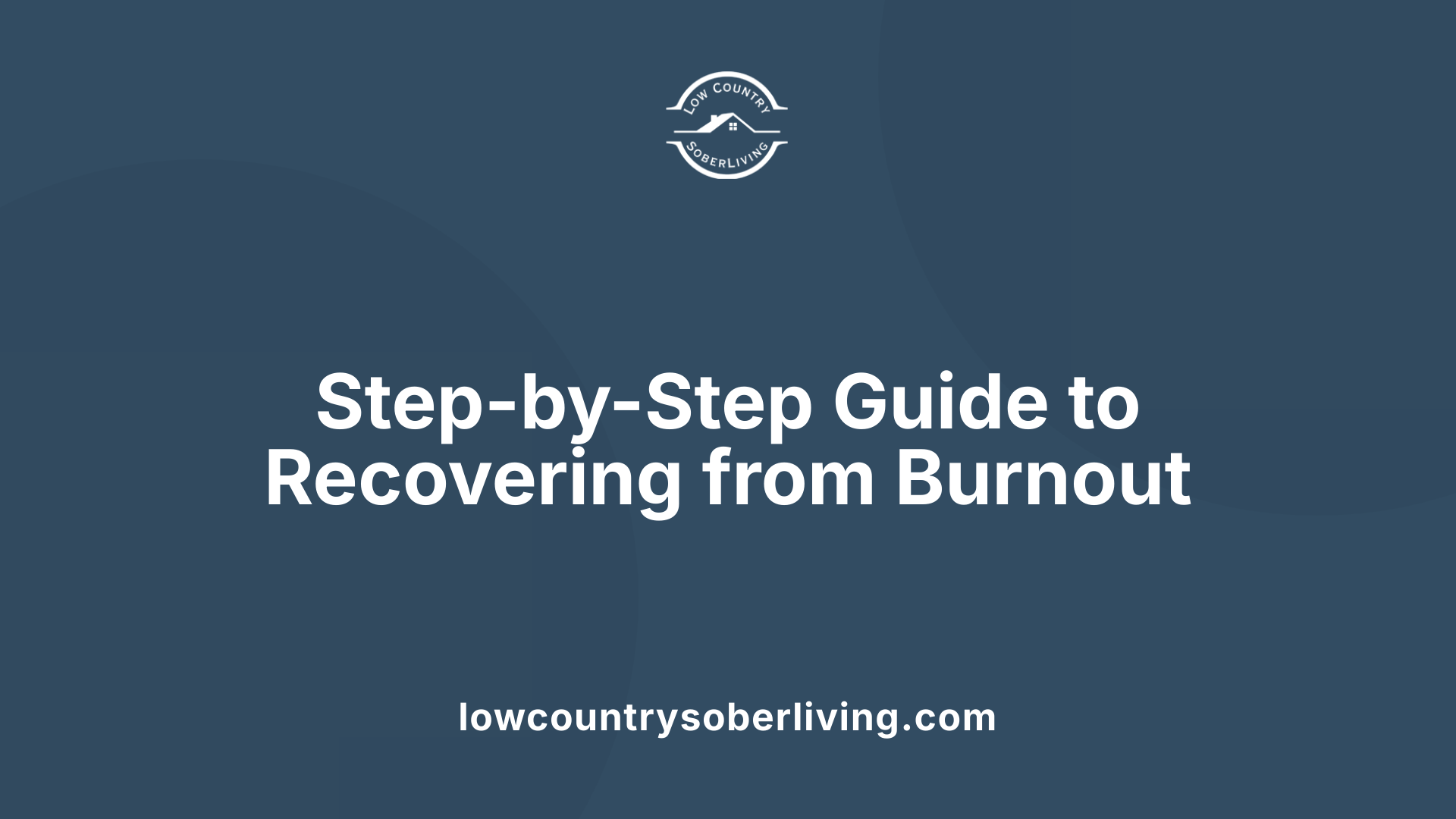
What are the stages of burnout recovery?
Recovery from burnout is a gradual process that involves several crucial steps. First, it begins with admitting that burnout is present, recognizing the impact it has on your well-being. Next is distancing oneself from stressors—this might include taking time off or stepping back from overwhelming responsibilities. The subsequent step focuses on prioritizing health through self-care practices such as proper sleep, nutrition, and exercise.
Once physical and emotional well-being are addressed, the process involves reevaluating personal and professional goals and values. This might mean adjusting expectations, setting new priorities, or exploring different career or lifestyle options. Following this, exploring alternative paths—like new hobbies, interests, or jobs—can bring renewed purpose and motivation.
Finally, taking breaks or making meaningful lifestyle changes helps solidify progress and prevent relapse into burnout. This could include regular rest periods, embracing hobbies, or restructuring your daily routine to foster a healthier, more balanced life.
How long does recovery typically take?
The duration of burnout recovery varies significantly depending on individual circumstances. Mild burnout may resolve in just a few months with consistent self-care and lifestyle adjustments. However, more severe or prolonged burnout can take several years to fully heal.
Several factors influence recovery speed, including the level of support from family, friends, or professionals, as well as personal resilience and the effectiveness of coping strategies employed. It's important to understand that recovery is a highly personal journey, and patience is essential.
For comprehensive guidance on the various stages and expected timelines for burnout recovery, searching "Burnout recovery stages and timeline" can provide additional insights and resources to support your journey towards well-being.
Strategies for Overcoming Burnout
Burnout can severely impact your emotional, physical, and mental well-being, but there are practical ways to recover and rebuild resilience.
One of the first steps is seeking professional help. A healthcare provider or therapist can offer guidance tailored to your situation, helping you address underlying issues like stress, emotional exhaustion, or any co-existing mental health conditions.
Building support systems is equally essential. Connecting with trusted friends, family, or colleagues provides emotional comfort and practical assistance. Sharing your feelings and experiences can lighten your load and offer new perspectives.
Open communication and setting boundaries at work and in personal life are vital. Clearly expressing your needs and limits helps prevent further overload and makes your commitments more manageable. Regularly evaluating your workload and learning to say no can significantly reduce stress.
Practicing self-compassion plays a crucial role. Being kind to yourself, recognizing your efforts, and avoiding self-criticism foster a more positive outlook and emotional recovery.
Implementing stress management techniques can bring immediate relief. Mindfulness, meditation, yoga, and breathing exercises promote relaxation and help you stay grounded amid stressors. Additionally, journaling or engaging in hobbies can serve as emotional outlets.
Adopting healthy lifestyle modifications supports your overall recovery. Prioritize at least 30 minutes of physical activity such as walking, swimming, or dancing, which boosts mood and energy levels.
Nutrition also influences burnout recovery. Focus on a balanced diet rich in Omega-3 fatty acids, reduce sugar and processed foods, and limit caffeine, nicotine, and alcohol intake.
Getting sufficient sleep and establishing good sleep hygiene are fundamental. Adequate rest helps restore your physical and mental reserves.
Finally, allocate time for activities you enjoy, whether it's a hobby, spending time with loved ones, or simply relaxing. These activities help counteract feelings of cynicism and inefficacy associated with burnout.
By strategically combining these approaches, you can effectively manage burnout, regain motivation, and foster long-term resilience.
Physical and Mental Healing Practices
How can I physically recover from burnout?
Physical recovery plays a vital role in overcoming burnout. Incorporating regular, rhythmic exercises such as walking, swimming, or dancing into your routine can significantly boost mood and reduce stress levels. These activities help release endorphins, improve focus, and promote overall relaxation.
In addition to exercise, maintaining a nutritious diet is essential. Focus on reducing sugar, refined carbs, caffeine, and unhealthy fats. Instead, include foods rich in Omega-3 fatty acids, such as salmon, walnuts, and flaxseeds, which support brain health. Staying well-hydrated and avoiding nicotine and excessive alcohol also contributes to physical healing.
Ensure your sleep hygiene is top-notch by establishing a consistent sleep schedule, creating a calming bedtime routine, and avoiding screens before sleep. Adequate rest helps repair the body and mind, making it easier to handle daily stressors.
What mental and emotional practices support recovery?
Supporting mental health requires mindful practices that help calm the mind and foster resilience. Techniques like meditation, yoga, and deep breathing exercises can decrease stress hormones and promote emotional balance.
Practicing self-compassion—being kind to yourself and recognizing your limits—can counter feelings of guilt or frustration common in burnout. Journaling about your feelings and progress provides clarity and encourages self-awareness.
Seeking professional help, such as therapy or counseling, offers additional support. Mental health professionals can guide you through emotional healing, helping you develop coping strategies, reframe negative thoughts, and reconnect with your purpose.
Combining these activities with ongoing social support creates a strong foundation for recovery and helps restore your emotional strength after burnout.
Preventive Measures and Maintaining Balance
What strategies can prevent burnout recurrence?
To keep burnout at bay, it’s important to set firm boundaries between your work and personal life. This means avoiding work-related tasks or emails during personal time and making space for activities that recharge you.
Prioritizing self-care plays a crucial role. This includes getting enough sleep, eating nutritious food, engaging in regular physical activity, and practicing stress-relief techniques such as meditation or yoga.
Building a strong social support network offers emotional validation and encouragement. Regularly connecting with friends, family, or support groups helps you process stress and maintain a sense of belonging.
Additionally, routinely assessing your workload and stress levels can help catch signs of overload early. Adjustments, such as delegating tasks or saying no to additional responsibilities, can prevent burnout from developing again.
How do I maintain a healthy work-life balance?
Balancing work and life effectively involves creating a schedule that dedicates quality time to both. Allocate specific hours for work tasks and set aside time for hobbies, relaxation, and relationships.
Practicing assertiveness is key—communicate your limits clearly and don’t hesitate to negotiate workload expectations.
Taking regular breaks during work hours and making time for enjoyable activities can boost your mental health and overall well-being.
The goal is to foster a lifestyle that promotes wellbeing, minimizes stress, and ensures you feel energized and motivated both at work and in your personal life.
By incorporating these strategies, you create a sustainable routine that supports mental health, reduces the risk of burnout recurrence, and maintains overall life satisfaction.
For further guidance, searching “Burnout prevention and balance” can provide additional tips and resources to sustain these healthy practices over time.
Recognizing Recovery and Progress
Understanding how to recognize progress in overcoming burnout is essential for maintaining motivation and ensuring effective recovery. Typically, signs of improvement include an increase in energy levels, which allows for more active participation in daily activities. Sleep patterns tend to settle into regular, restorative cycles, and motivation to work or engage in hobbies begins to return.
Emotional detachment, a common symptom during burnout, gradually diminishes as individuals start feeling more connected and engaged with their work and personal lives. Additionally, routines become more stable, with healthier boundaries around work and personal time. This phase signifies that the recovery process is moving in the right direction.
Indicators of successful recovery also encompass a renewed sense of engagement and enthusiasm. Reduced feelings of fatigue and a lifted mood often accompany these changes. People typically find themselves re-establishing daily routines, like exercise or hobbies, and experiencing a renewed sense of purpose.
Monitoring these signs can help determine if ongoing efforts to combat burnout are effective. If these positive patterns are observed, it suggests that one is on the right path toward restored well-being.
Regular self-check-ins, such as journaling or mindfulness practices, can help track these changes. Recognizing early signs of improvement motivates continued self-care and lifestyle adjustments necessary for full recovery.
For more insights, searching for "Signs of burnout recovery progress" can provide additional perspectives and personal stories that reinforce these indicators of progress.
Understanding the Difference: Burnout and Depression
What is the difference between burnout and depression?
Burnout and depression are often confused, but they have distinct features. Burnout is primarily a work-related state characterized by physical, emotional, and mental exhaustion due to prolonged stress at work. It usually involves feelings of cynicism or negativity towards one’s job and a reduced sense of efficacy or achievement.
Depression, on the other hand, is a clinical mental health condition that affects all areas of life, not just work. It manifests as persistent low mood, feelings of worthlessness or guilt, and a general loss of interest or pleasure in daily activities. Depression can cause mood changes, sleep disturbances, appetite changes, and even suicidal thoughts.
While burnout is situational and tends to improve with specific changes like taking breaks or reevaluating priorities, depression often requires professional treatment such as therapy, medication, or a combination of both.
When to seek professional help
It’s important to recognize when burnout may be crossing into depression. If feelings of exhaustion are accompanied by persistent sadness, hopelessness, or thoughts of self-harm, professional help is essential. Consulting a healthcare provider can clarify diagnoses and lead to appropriate interventions. Regular mental health assessments can also help determine if symptoms like sleep disturbances, mood changes, or loss of interest are signs of a deeper issue.
Co-occurrence risks
Burnout and depression can occur simultaneously, exacerbating each other. High stress without adequate support can increase the risk of developing depression. Addressing burnout early through lifestyle changes, support systems, and self-care can reduce the risk of progression to depression.
Understanding these differences helps in seeking the right help at the right time, ensuring effective recovery and ongoing mental health management.
Empowering Yourself for Better Recovery
How can I start my mental and emotional recovery after burnout?
Recovering from burnout begins with self-awareness. Recognizing and accepting that you are experiencing burnout is the first critical step. Acknowledge your feelings of exhaustion, cynicism, and lowered efficacy without judgment.
Seeking support from trusted loved ones, friends, or mental health professionals can provide emotional relief and practical guidance. Sharing your experience can help reduce feelings of isolation and open avenues for assistance.
Prioritize self-care by establishing healthy routines. Focus on getting enough sleep, engaging in regular physical activity, and maintaining a nutritious diet. These habits boost your energy levels and support emotional resilience.
Set clear boundaries to protect your well-being. This may include limiting work hours, avoiding overcommitment, and creating a dedicated space or time for rest and relaxation. Regularly engaging in activities that bring you joy—such as hobbies, walks, or creative pursuits—can also renew your motivation and positive outlook.
In addition, consider seeking therapy or counseling. Evidence-based approaches like cognitive-behavioral therapy (CBT) can help you develop coping skills, reframe negative thoughts, and rebuild confidence.
Advocating for workplace adjustments, such as manageable workloads or flexible schedules, can facilitate your recovery process. Open communication with your employer about your needs and boundaries is crucial.
Remember, recovery from burnout is a gradual process. Be patient and compassionate with yourself as you implement these strategies. Consistent effort and support can pave the way toward renewed energy, engagement, and well-being.
A Continuous Journey Toward Well-Being
Overcoming burnout is an individualized process that demands patience, support, and deliberate lifestyle adjustments. Recognizing early signs, seeking help, implementing effective strategies, and maintaining healthy boundaries are essential steps on the path to recovery. Remember, the journey does not end with healing; ongoing self-care and support are vital for sustained well-being. By prioritizing your health and emotional resilience, you can rebuild a fulfilling life beyond burnout and foster a resilient mindset for future challenges.
References
- 12 Ways To Recover From Burnout
- Burnout: Symptoms, Treatment, and Coping Strategy Tips
- Burnout Recovery: 11 Strategies to Help You Reset - Healthline
- 4 Steps to Beating Burnout - Harvard Business Review
- How to recover from burnout: 13 ways to support your recovery - Calm
- 14 Ways to Deal With Burnout and Love Your Life Again - BetterUp
- Job burnout: How to spot it and take action - Mayo Clinic
- 6 Signs You're Burned Out: How to Cope and Prevent It

